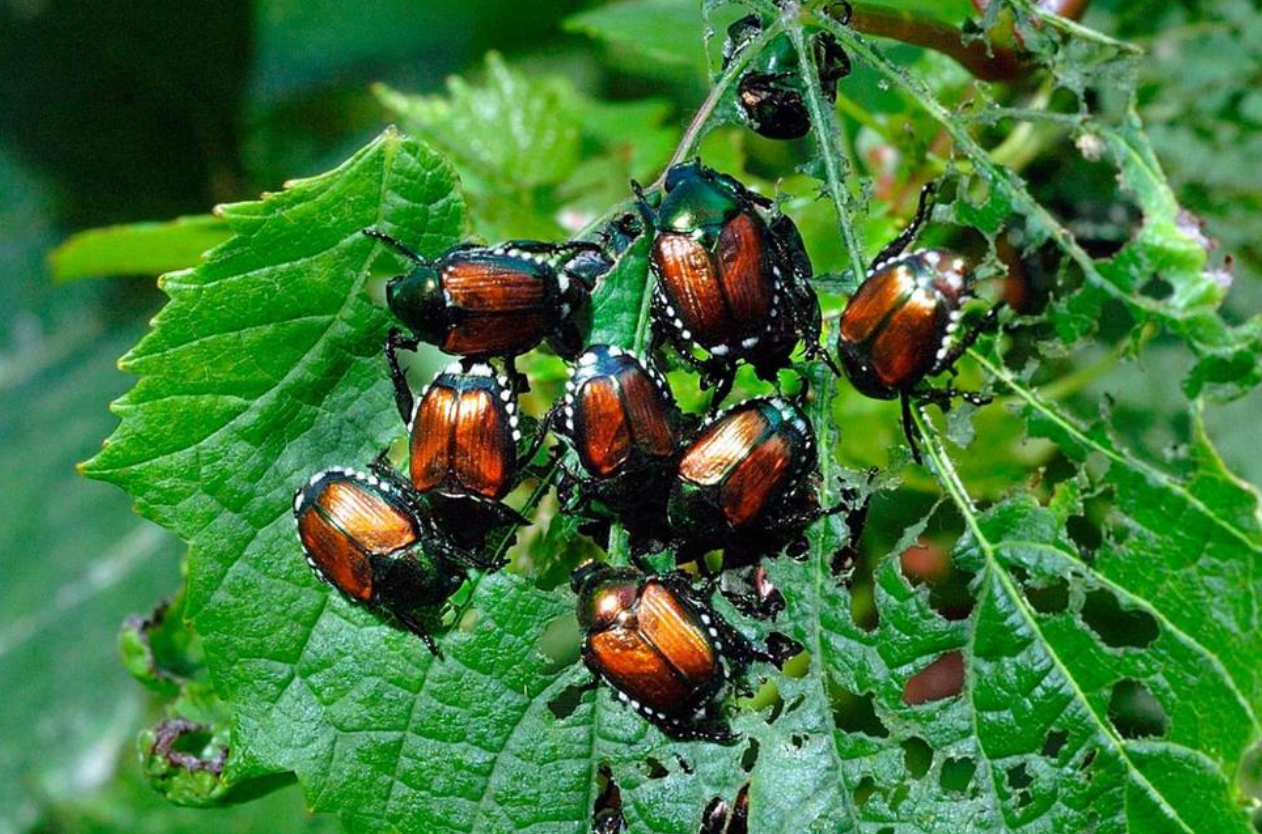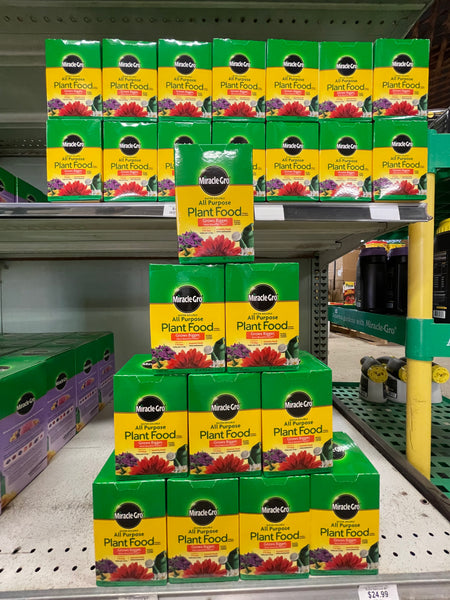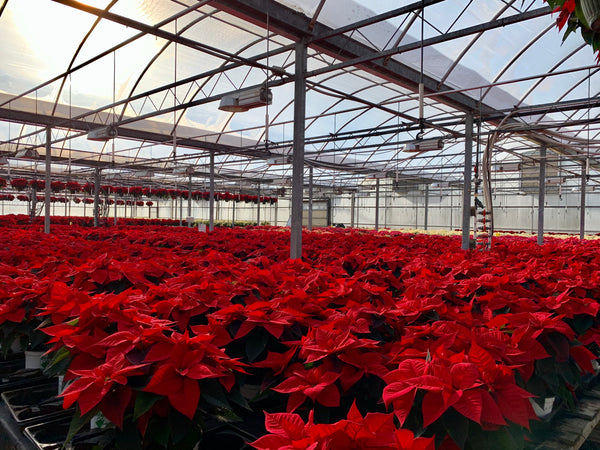BEAT THE BEETLES

It’s that time of year again. The time of year you go out into your yard to enjoy all your beautiful landscaping, hard work, money well spent, and… WHAT’S THAT?! Why do my rose bushes have holes all over them and are littered with a shiny bug?! You may be a victim of Japanese beetles.
Japanese beetles are an invasive species commonly found throughout the eastern US. They are on average 1/3 to ½ inch long with a metallic green head and copper-brown wing covers.
Japanese beetle grubs look like other average, white grubs. They spend the winter underground in the soil of lawns and other grassy areas. In spring, the grubs move towards the soil surface to finish feeding and pupate into adult beetles. Since they chew the roots that causes the turf to brown and die. Turf damage caused by grubs can be easily identified when the grass pulls away from the soil, like loose carpet.
Adult beetles start to surface from the ground in late June into early July. They feed primarily in July and August and sometimes into September. Leaves damaged by beetles have a feeding-induced odor causing other beetles to be attracted to the plant. This can often result in mass of beetles feeding and mating on particular plants while plants nearby are only lightly infested.
Adult beetles feed on more than 300 plant species, whereas the grubs feed mainly on the roots of the grasses. Adult beetles feed on the leaves, flowers, and fruits of many different plants. The most common plants to find Japanese beetles on are roses, grapes, lindens, fruit trees, and hibiscus. They skeletonize the leaves by feeding on tissue between the major veins which gives them that lace-like appearance. The damaged leaves to turn brown and potentially fall off. In most cases, the damage is just unsightly and will not kill the plants.
So, how do we manage these major pests? There are many options to manage and rid our plants of these pests, both non-chemically and through the use of pesticides. It is best to start management early, when they first appear. Physically removing beetles can be a practical and effective management practice for smaller landscapes or few plants. Handpick or knock the beetles into a bucket of soapy water to kill them. Although controversial, pheromone/bait traps can be placed a minimum of 10 feet from the plants you want to protect and 3 to 5 feet above the ground. Poorly maintained traps can cause more harm than good. If you choose to use an insecticide, remember they can pose significant risks to beneficial insects, including pollinators, as well as birds, fish and mammals. Neem oil is effective for several days but repeat applications are necessary. Stan’s also carries Sevin dust which kills over 65 insects, including Japanese beetles and can be used on home garden vegetables, fruits, ornamentals, and lawns. We also carry a few different brands that offer a 3-in-1 product, providing insect, mite, and disease control, including Ortho 3-in-1, BioAdvanced 3-in-1, and Bayer all-in-one Rose & Flower Care.





Stan's Garden Center
Author